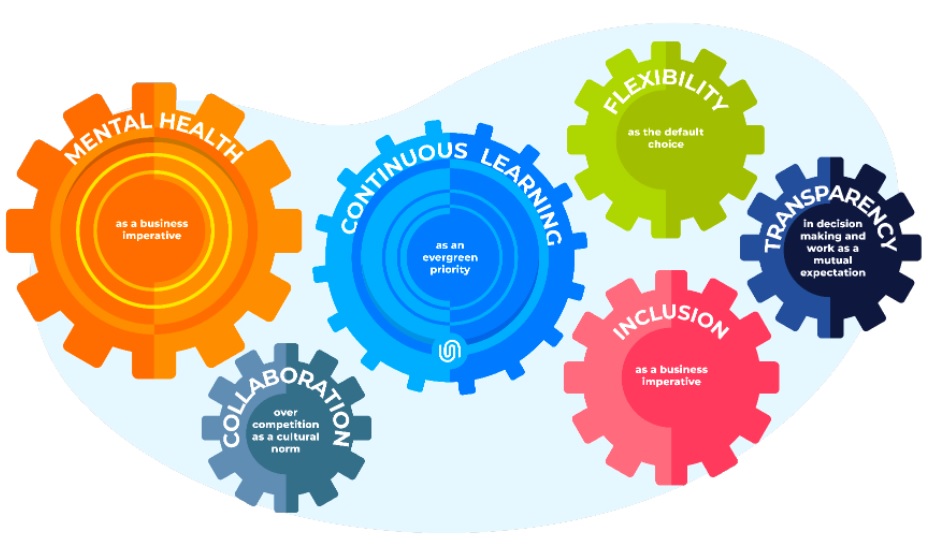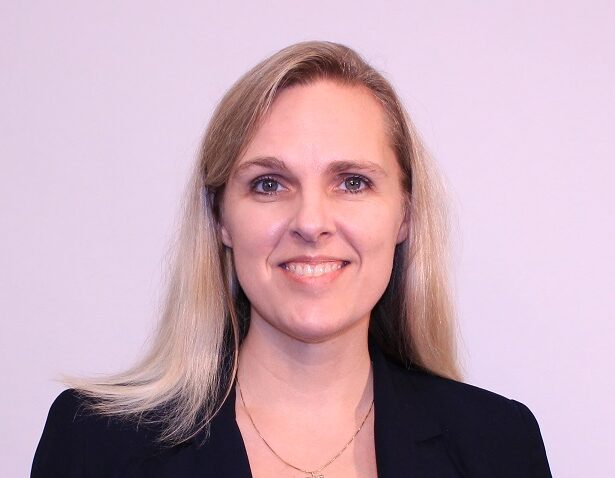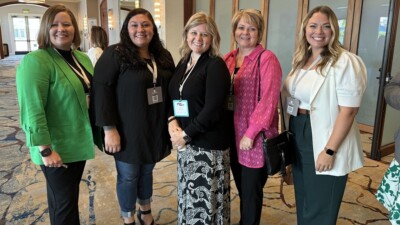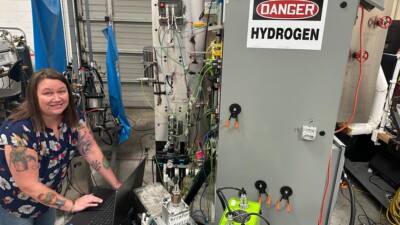Engineering teams thrive when embracing the full spectrum of cognitive abilities.

In an increasingly complex and fast-paced world, engineers and manufacturers are beginning to recognize the value of neurodiversity in the workplace. This shift comes at a critical time, as many organizations are experiencing fatigue and even backlash after years of expanding diversity, equity, and inclusion (DEI) programs. However, a new perspective is emerging: one that moves beyond simple accommodation to truly embracing cognitive diversity as a key to unlocking team performance and innovation.
Understanding neurodiversity

Co-founder, Chief Data/AI Officer
Qzuku
Neurodiversity encompasses individuals — roughly 15% of the world’s population — with neurological differences such as autism, ADHD, dyslexia, dyspraxia, and other cognitive variations. These differences are not deficits but unique ways of thinking and processing information that can bring valuable perspectives to a team. As neurodiversity expert Dr. Nicole Radziwill, Co-founder and Chief Data/AI Officer at Qzuku Data and AI Quality Institute explained, “Even a neurodivergent majority company is not diverse enough to achieve the true levels of success that we all can achieve together.”
Neurodiversity creates “spiky profiles” of strengths and weaknesses, in contrast to the assumed “flat profiles” of neurotypical individuals. This variation can lead to misunderstandings and challenges in the workplace, but it also offers significant potential for innovation and problem-solving.
Personal journeys: Discovering
Radziwill’s own journey of self-discovery illustrates the complex nature of neurodiversity. Despite her academic and professional success, including earning a college scholarship at 16 and later becoming a university professor, she didn’t recognize her neurodivergence until in her late 30s.
“After multiple counselors suggested I might be on the autism spectrum, I initially rejected the idea,” Radziwill recalled. “I stood up and said, ‘You know what’s wrong with me? You think it’s that I’m autistic? Well, clearly, you haven’t learned all you need to learn in your profession…and I walked out.”
Years later, she came to embrace her neurodivergent identity. “I went through that for about a year,” she explained, “And then gradually realized, my God, this explains absolutely everything.”
This experience informs Radziwill’s perspective on workplace inclusion. Rather than focusing narrowly on accommodating specific conditions, she advocates for creating environments where all employees can understand and leverage their unique cognitive profiles.
In his blog on Foothold (The Institution of Engineering and Technology Benevolent Fund), Principal Geotechnical Engineers and Neurodiversity Advocate Martin Griffin writes about his experience living with multiple neurodivergent conditions: “As someone with dyslexia, dyspraxia, autism, and visual impairment, I’ve learned that my neurodiversity varies from day to day. Some days, I’m hyper-focused and can accomplish tasks with incredible efficiency. Other days, I struggle with basic organization. This ‘spiky profile’ is a reality for many neurodivergent individuals.”
Evolution of workplace diversity

Chief Inclusion and Diversity Officer
Progress
The conversation around diversity in the workplace has expanded beyond traditional categories to include neurodiversity. Shirley Knowles, Chief Inclusion and Diversity Officer at Progress, an AI-powered infrastructure software provider, said, “We’re at a time where people are more and more willing to be open and talk about it.” This openness is crucial for creating an environment where neurodiverse individuals feel comfortable disclosing their needs and leveraging their strengths.
Knowles shared an anecdote about a former colleague who made mistakes on documents that became a frequent occurrence. Finally, after a significant error to an item her former CEO needed, the co-worker confided in Knowles that they had dyslexia.
“It was as though a new door had opened — all of that time where I was feeling upset at the mistakes finally made sense and we were able to come up with solutions from there. It wasn’t that they weren’t focusing on the details, there was a real issue, something they’d been navigating through since childhood that was the root cause.” Although the disclosure was likely tough for Knowles’ colleague to share, it was what was needed to strengthen the working relationship.
However, as Radziwill discovered while at Ultranauts, a company with more than 75% of employees identifying as autistic, even a neurodiverse majority workforce faces challenges. “You cannot expect a whole organization to function perfectly well for everybody.”
Challenging traditional norms
Like many others, the tech and engineering industries have long operated under certain assumptions about what constitutes “professional” behavior and appearance. However, a new generation of workers is challenging these norms, asserting that their abilities matter more than adhering to traditional dress codes or communication styles.
Knowles reflects on her own experience with traditional gender roles in the workplace: “I get it…you wore high heels when you went to work. You have these professional clothes that were pressed all the time when you went to work. I get that.”
But that is changing. This shift in perspective is particularly relevant when considering neurodiverse individuals who may have different sensory needs or communication styles that don’t align with traditional corporate expectations.
Understanding neurodivergent traits
Neurodivergent individuals may:
- Develop skills at a different pace or order than expected. Example: Excel in some areas while struggling in others.
- Communicate in unique ways. Example: Prefer direct communication or struggle with small talk.
- Find eye contact uncomfortable or unnecessary Example: Look away while listening to focus better on words.
- Have difficulty modulating voice or speech patterns. Example: Speak with consistent volume regardless of setting.
- Use less conventional body language or facial expressions. Example: Not smile when happy or use fewer gestures while speaking.
- Experience empathy differently. Example: Feel deeply for others but struggle to express it conventionally.
- Find it challenging to interpret others’ nonverbal cues. Example: Miss subtle hints or social cues in conversations.
- Interpret language literally. Example: Struggle with figures of speech or sarcasm.
- Prefer to focus deeply on one task at a time. Example: Find it difficult to switch between activities quickly.
- Work best independently or in specific collaborative settings. Example: Prefer structured interactions in group work.
- Experience sensory input intensely. Example: Feel overwhelmed by sounds, lights, or textures others might not notice.
Remember: These traits vary widely among neurodivergent individuals. Many people may experience some of these traits without being neurodivergent, and not all neurodivergent people will experience all of these traits. (Adapted from Verywellhealth.com.)
Moving beyond accommodation
The key to successfully integrating neurodiversity in engineering is to move beyond simple accommodation. Instead of asking, “How do we accommodate this different group of people?” the question becomes, “How can neuroinclusion help any group of diverse individuals relate to each other more effectively?”
This approach recognizes that diversity extends far beyond visible demographics or diagnostic labels. Even within seemingly homogenous groups, individuals bring varied thinking styles, communication preferences, and work approaches.
“We want to steer it towards using neurodiversity and neuroinclusion as the basis that we use to understand each other better — whether we are neurodivergent or not. And then, with that new information, let’s see how we can amplify the performance of our team,” Radziwill said.
Empowering teams through neuroinclusion
Radziwill advocates for giving work groups tools to create positive team dynamics themselves rather than imposing one-size-fits-all solutions from above. One such tool is Ultranaut’s “Biodex” — a guide employees create to explain their work preferences and interaction styles. By sharing these insights, team members can better collaborate and support each other’s success.
“The Biodex has been a game-changer for our teams,” said Radziwill. “It allows individuals to communicate their needs and preferences in a structured way, reducing misunderstandings and fostering a more inclusive environment.”
Business case for neurodiversity
Beyond the moral imperative for inclusion, there’s a strong business case for embracing neurodiversity in engineering. Neurodiverse individuals often possess unique skills and perspectives that can drive innovation and problem-solving. And in the talent-shortage field of STEM, employing neurodiverse technical staff can not only improve fill rates for hard-to-fill positions for companies but also offer a competitive advantage.
“You have that insider knowledge through experience of someone that is dyslexic, ADHD, bipolar, dyspraxia, whatever it is… And so now we can use that thinking and create products and offer services that target these people. They exist,” said Knowles.
She cited an example of a Google Pixel phone camera designed to capture a range of skin tones better, likely due to having a diverse team involved in product development. This kind of inclusive design serves a broader customer base and can lead to increased market share and customer loyalty.
“Neurodivergent individuals often excel in pattern recognition, attention to detail, and out-of-the-box thinking. These are precisely the skills needed to drive innovation in engineering and technology,” added Radziwill.
In the talent-shortage field of STEM, it doesn’t take a math genius to make the connection between the 15-20% of the world’s population who exhibit some form of neurodivergence — many of whom are underemployed or unemployed — and the potential.
Overcoming challenges
Once hired, integrating neurodiverse individuals into the workplace is not without challenges. Managers may need to adapt their communication styles and expectations. However, the benefits far outweigh the initial adjustments.
Knowles underscored the importance of empathetic leadership in this process. Managers who recognize and appreciate different ways of thinking are better equipped to harness the unique talents of their team members.
Radziwill emphasized that the goal isn’t eliminating all friction or creating perfectly harmonious teams. In fact, she argued that some creative tension is essential for innovation.
“You don’t want teamwork to be effortless,” she said. “You want that creative tension. You want somebody to say, ‘Having a pizza with M&Ms and an entire rotisserie chicken on it is stupid, and here’s why no one will eat it.’ And then you want somebody else to say, ‘Let’s go do a survey and show them pictures of pizza and see who would eat it.’ And then you get data, and then you’re done. But you need that creative tension.”
The challenge is channeling that tension productively while avoiding toxic dynamics. This requires moving beyond simplistic notions of eliminating bias or achieving perfect inclusivity.
“We’re never going to be able to remove bias,” Radziwill said. “Everyone has biases because they’re based on your past experiences of the world.” Instead, she advocates for greater self-awareness and intentionality in navigating workplace relationships.
Supporting neurodiversity throughout the employee lifecycle
To truly embrace neurodiversity, organizations need to consider it at every stage of the employee lifecycle:
- Attraction: Create inclusive job descriptions and highlight neurodiversity-friendly policies.
- Selection: Adapt interview processes to accommodate different communication styles.
- Initialization: Provide clear onboarding processes and consider mentorship programs.
- Retention: Offer flexible work arrangements and create a supportive environment.
- Promotion: Ensure fair evaluation processes that recognize diverse strengths.
- Cessation: Provide support during transitions and maintain positive relationships.
Griffin writes, “In my experience, the selection and initialization phases are particularly crucial. Many neurodivergent individuals struggle with traditional interview formats, which often don’t accurately reflect their abilities. And starting a new job can be overwhelming due to sensory issues or difficulties with change. Companies that provide clear, structured onboarding processes and allow for gradual adjustment periods can make a world of difference.”
Role of disclosure and support
One of the ongoing challenges in creating a neurodiverse-friendly workplace is the issue of disclosure. Many individuals may hesitate to disclose their neurodiversity due to fear of stigma or discrimination. Knowles stresses the importance of creating a supportive environment where people feel safe to be their authentic selves.
She also highlights the role of Employee Resource Groups (ERGs) in providing support not just for neurodiverse individuals but also for their families and colleagues. These groups can serve as valuable resources for education, advocacy, and community-building within organizations.
Radziwill added, “Disclosure should always be a personal choice. What’s important is creating an environment where people feel they can disclose if they want to, without fear of negative consequences. It’s about fostering a culture of understanding and support.”
Looking to the future
As engineering evolves, embracing neurodiversity will likely become increasingly important for companies looking to innovate and stay competitive. Radziwill envisions a future where diverse minds collaborate to create products and services that cater to a wide range of human experiences and needs.
“If there’s going to be a sea change, it’s going to be manager by manager,” she says, emphasizing the importance of individual leaders in driving this transformation.
“The future of engineering lies in our ability to harness the full spectrum of human cognition. By embracing neurodiversity, we’re not just creating more inclusive workplaces — we’re unlocking new realms of innovation and problem-solving,” added Knowles.
The journey towards the true inclusion of neurodiverse individuals in engineering is ongoing, but the potential benefits are clear. By fostering an environment that values different ways of thinking and working, companies can tap into a wealth of talent and creativity that has long been overlooked.
“The problems that we have to work through today in our jobs in society are so complex and moving so quickly that we can no longer assume that any one of us has the answer,” Radziwill said. “Literally, the answer is going to be in between the space of those of us who come to solve it.”
As we move forward, it’s clear that neurodiversity isn’t just about accommodation or compliance — it’s about recognizing and leveraging the unique strengths that come from diverse ways of thinking. In the world of engineering, where innovation is paramount, embracing neurodiversity may well be the key to unlocking the next generation of groundbreaking solutions.
References
TeamX, https://ultranauts.co/team-x/
Biodex, https://biodex.info/
Foothold, https://www.myfoothold.org/your-foothold-is-here/foothold-and-the-iet/
Neurodiversity @ Work Employer Roundtable, https://disabilityin.org/what-we-do/committees/neurodiversity-at-work-roundtable/
Neurodiversity Career Connector, https://ndcc.simplifyhire.com/
AutismCRC at INSAR 2024 podcast, https://www.youtube.com/watch?v=fOFnzka5-D4
Verywell Health, Verywellhealth.com



